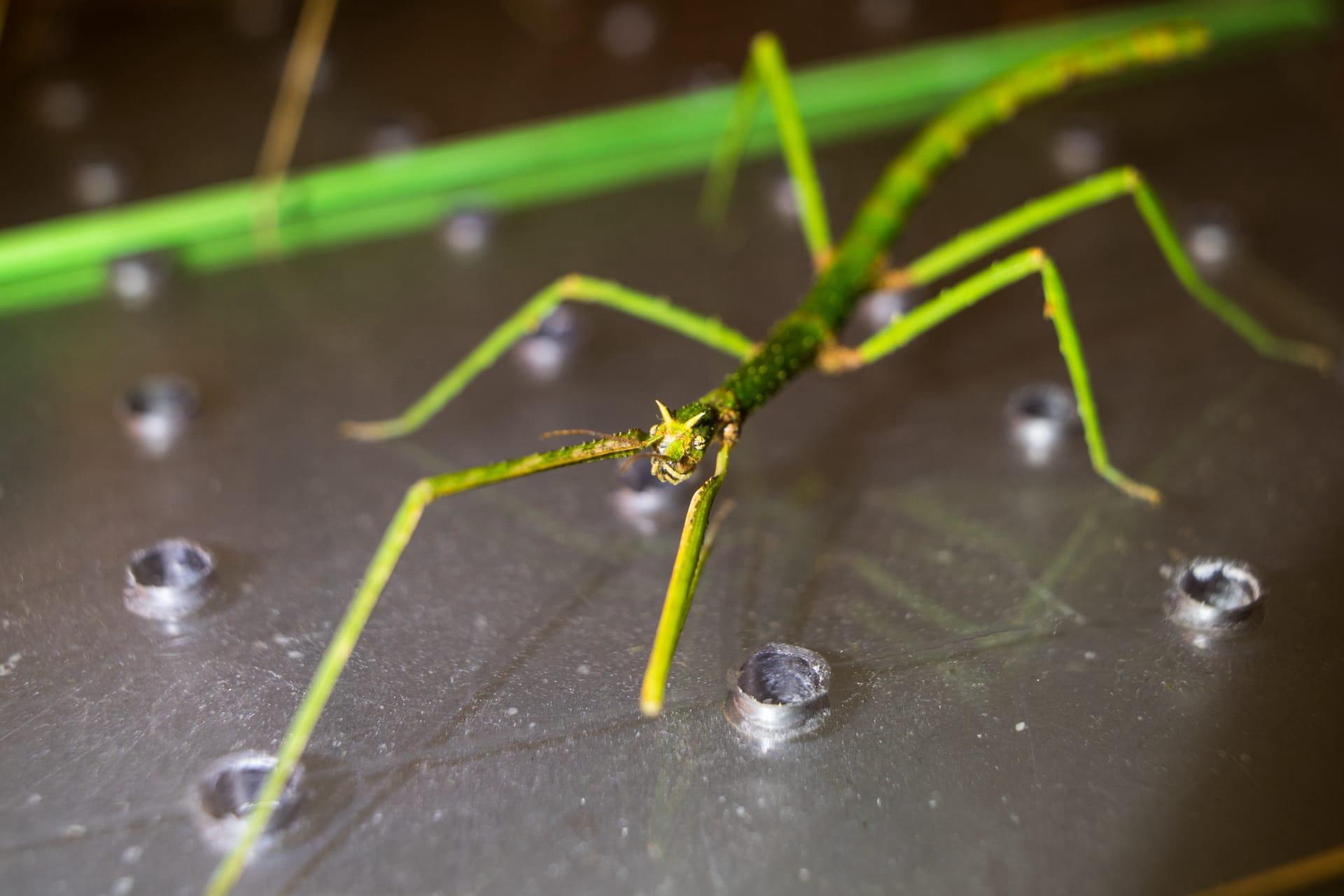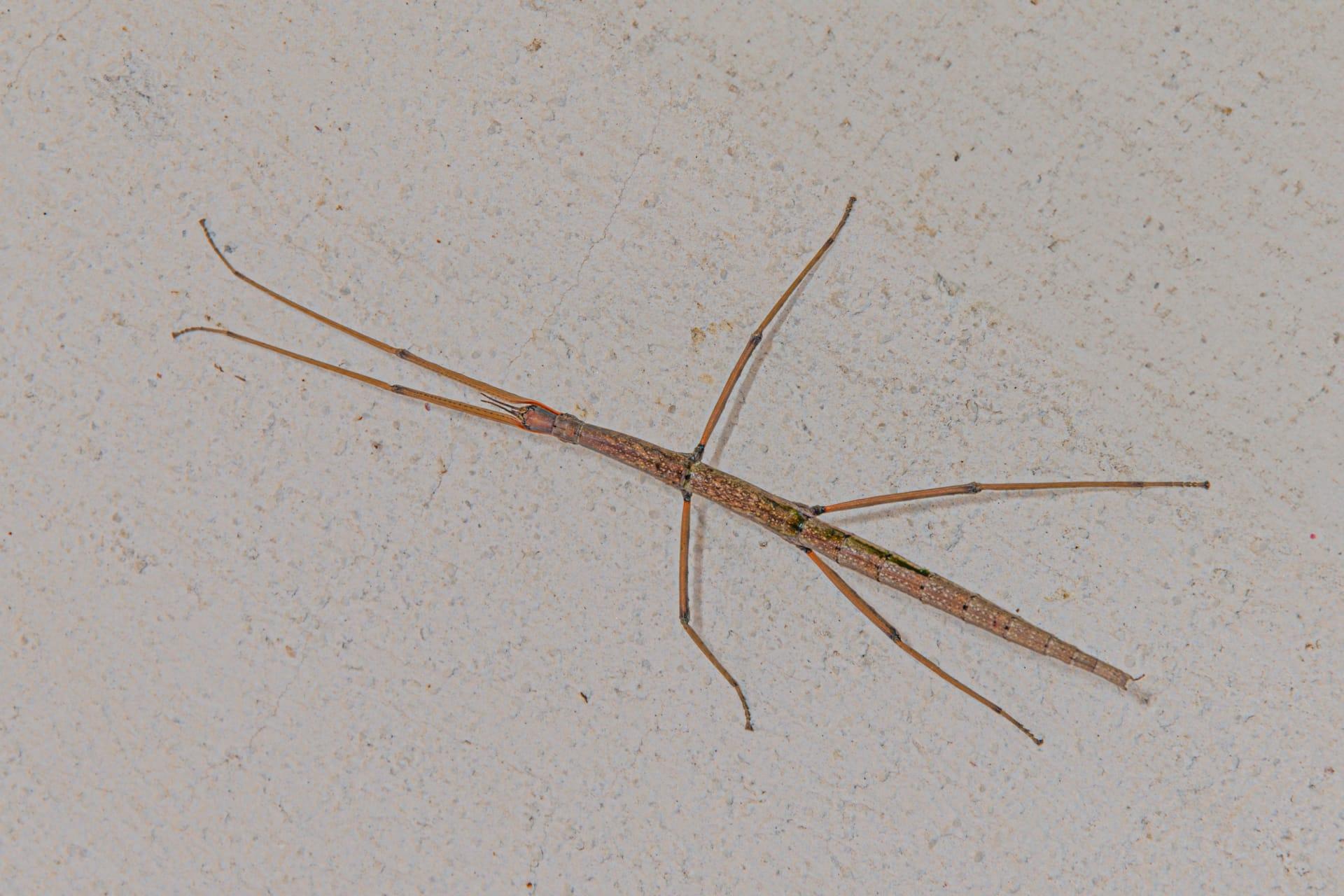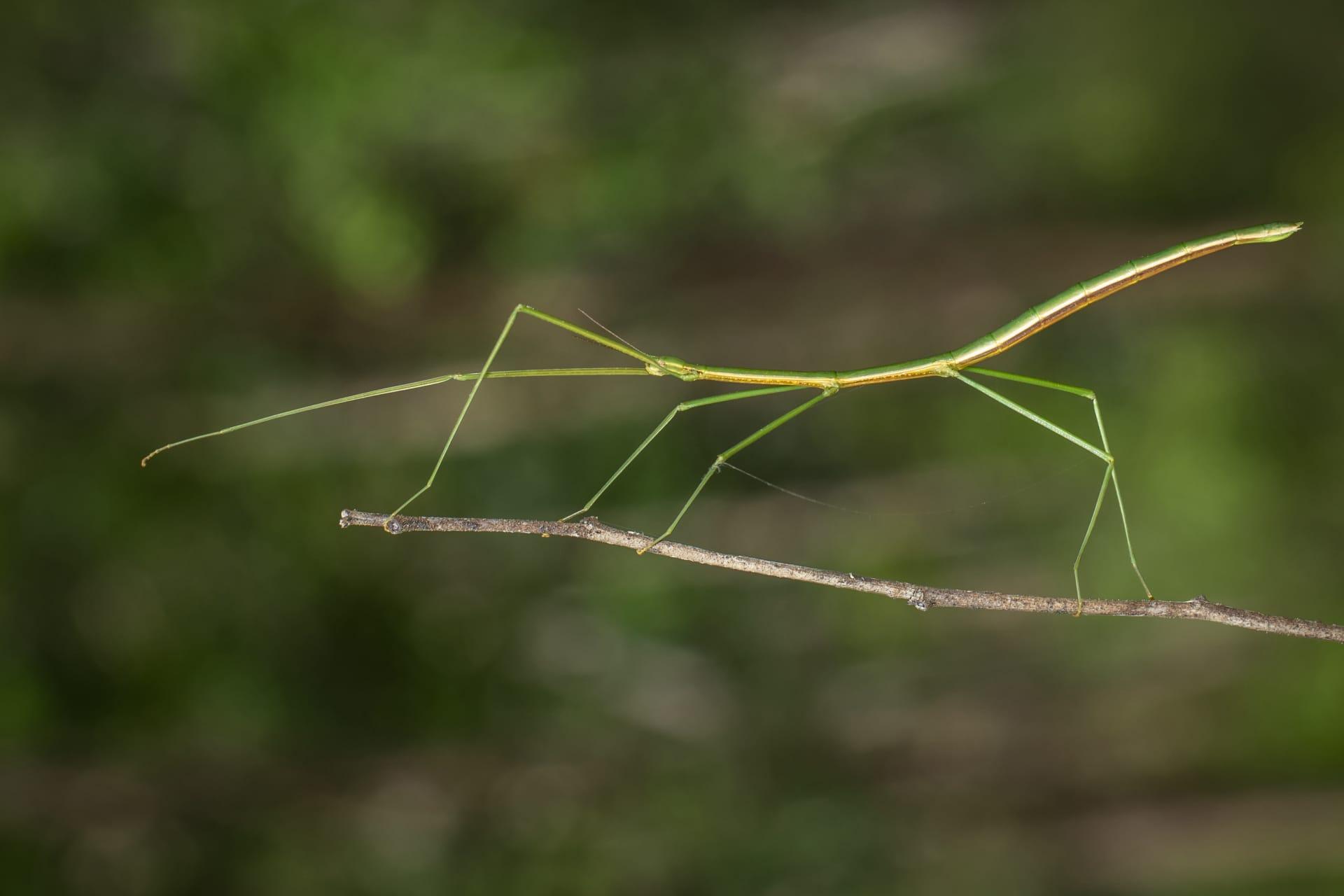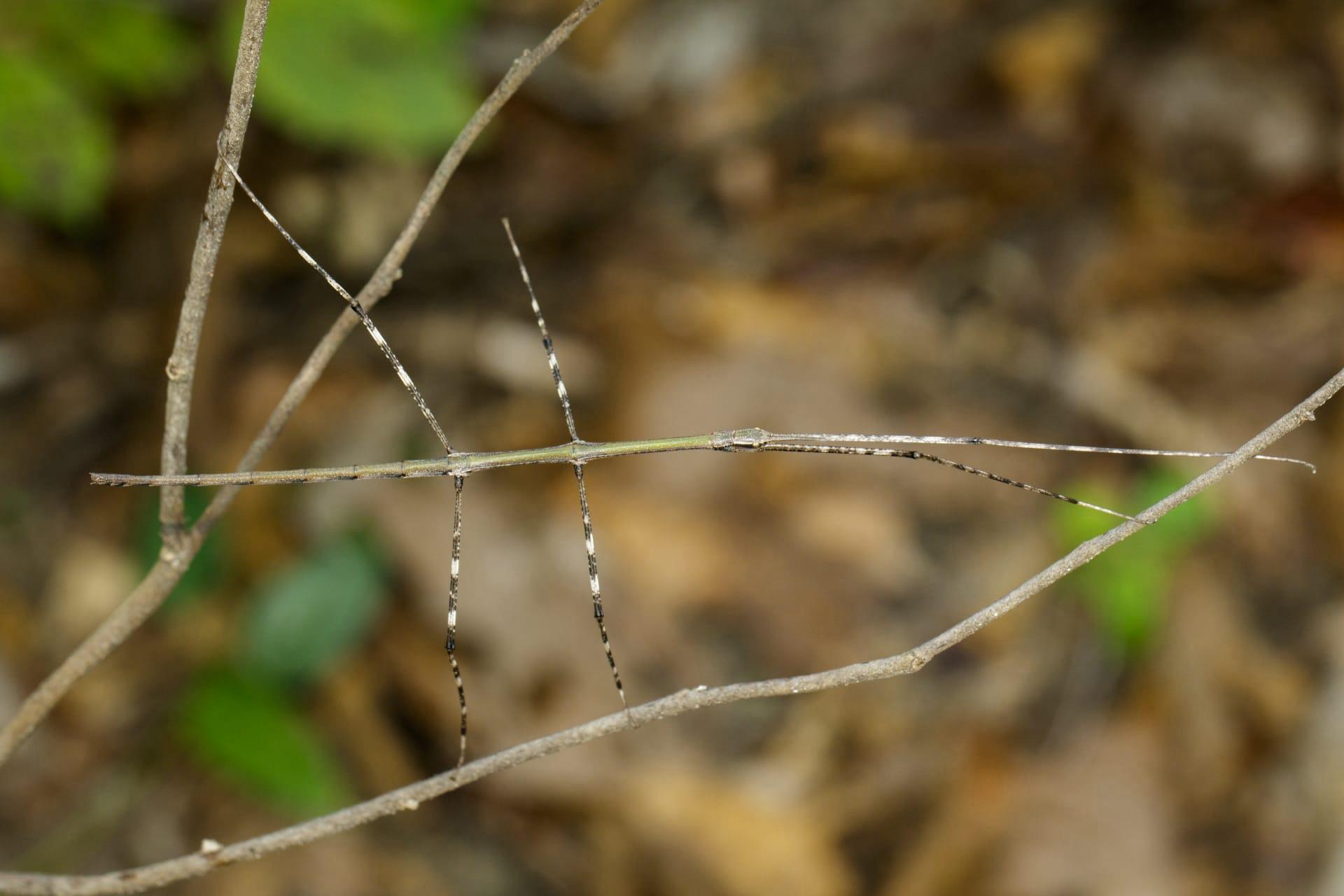Walking Stick Bug
- Home /
- Mini Encyclopedia /
- Animal /
- Walking Stick Bug
1
The Walking Stick Bug, a member of the Phasmatodea order, is a fascinating example of nature's ingenuity in camouflage. This order is divided into several families, with the most common being Phasmatidae. These bugs have evolved to closely resemble twigs and branches, a trait that provides them with an incredible advantage in avoiding predators. They vary significantly in size, ranging from 1 inch (2.5 cm) to over 12 inches (30 cm) in length, depending on the species.
Geographically, Walking Stick Bugs are found across the globe, with a majority of their species inhabiting tropical and subtropical regions. There's a particularly high diversity of these insects in South-East Asia, South America, and Australia. In these environments, they thrive in rainforests, where their twig-like appearance blends seamlessly with the dense foliage. Some species, however, have adapted to temperate climates and can be found in parts of North America and Europe.

2
Question: Do Walking Stick Bugs pose a threat to humans?
Answer: Contrary to a common misconception, Walking Stick Bugs are generally harmless to humans. They don't have venom or stingers, making them safe to handle. However, some species can emit a defensive spray that may cause irritation to the skin or eyes. This spray is their way of deterring predators, but it's relatively mild in comparison to the defenses of other insects. The primary concern with Walking Stick Bugs is their potential impact on vegetation, as they are herbivorous and can be found munching on leaves.

3
The primary survival strategy of the Walking Stick Bug is its remarkable camouflage. Their body shape and coloration are perfectly adapted to mimic the twigs and branches of their habitat. This mimicry is so effective that predators often overlook them, even at close range. Some species have even developed the ability to sway back and forth, mimicking the movement of branches in the breeze.
Another survival tactic is their nocturnal lifestyle. Most Walking Stick Bugs are active at night, which further reduces the chances of being spotted by daytime predators. During the day, they remain motionless and blend into their surroundings. Some species can also regenerate lost limbs, a handy adaptation for an insect that might lose a leg to an inquisitive bird or other predator.

4
In the ecosystem, Walking Stick Bugs play a role as both prey and consumer. As herbivores, they feed on leaves, which can make them important in controlling plant growth. However, excessive feeding by large populations can also lead to defoliation of trees and shrubs, impacting the health of these plants.
As prey, Walking Stick Bugs are a food source for various birds, mammals, and reptiles. Their presence in an ecosystem can indicate a healthy, balanced environment, as their survival depends heavily on the availability of vegetation and the presence of natural predators. Their unique adaptation of camouflage also influences the hunting strategies of their predators, contributing to the dynamic nature of ecological interactions.

5
Film: A notable documentary featuring the Walking Stick Bug is "Insects: The Invisible World" produced in the United Kingdom in 2020. This documentary delves into the fascinating world of insects, highlighting the incredible adaptations and survival strategies of various species, including the Walking Stick Bug. It offers a glimpse into their camouflaging techniques and their role in the ecosystem.
Book: "The Secret Life of Stick Insects" by Dr. Jane Hamilton, published in the United States in 2018, is an insightful exploration of the lives of stick insects, including Walking Stick Bugs. Hamilton's work combines scientific research with engaging narratives, providing a comprehensive view of these insects' behaviors, habitats, and evolutionary adaptations.
Book: Another significant book is "Masters of Disguise: The World of Stick and Leaf Insects" by Richard Andrews, released in Canada in 2021. Andrews' book focuses on the remarkable camouflage abilities of phasmids, providing detailed accounts of various species, their habitats, and the evolutionary significance of their mimicry. The book is richly illustrated, bringing the hidden world of these insects to life.